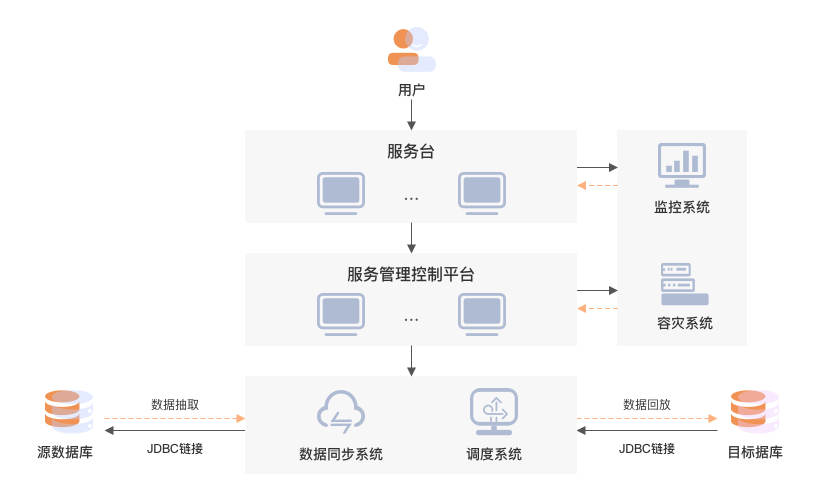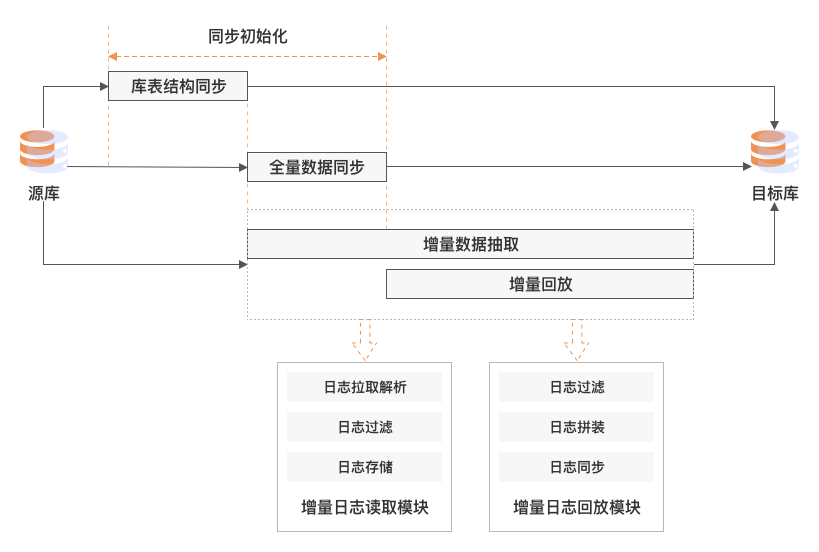
-
 Efficiency
EfficiencyIt is capable of rapidly and accurately synchronizing and backing up large amounts of data.
-
 Concurrency
ConcurrencyIt supports high-concurrency data replication operations, handling a large number of concurrent write and read requests.
-
 Security
SecurityIt supports data transmission encryption and identity authentication, ensuring the security and privacy of data during replication.
-
 Monitoring and Alerts
Monitoring and AlertsIt provides real-time monitoring and alerting functions, monitoring indicators such as the status and latency of data replication.
-
 Real-time Capability
Real-time CapabilityIt provides real-time data replication services, promptly synchronizing incremental data to the target database to ensure data consistency.
-
 Stability
StabilityIt possesses good stability and reliability, capable of handling complex data replication scenarios to prevent data loss or corruption.
-

It supports homogeneous and heterogeneous data synchronization for Oracle, GaussDB, and openGauss.
-

It supports database structure migration, full migration, and incremental migration.
-

It supports library-level synchronization and table-level synchronization.
-

It supports viewing resources and cluster monitoring alert information.
-

It supports viewing and processing task workflows.
-

It supports data comparison functions.
-
 Database Migration
Database MigrationScenarios requiring data migration across regions or data sources.
-
 Cross-Region Disaster Recovery
Cross-Region Disaster RecoveryIt supports continuous data synchronization between the business center and the disaster recovery center. In case of a failure in the primary region, user requests can be switched to the disaster recovery region to achieve cross-region disaster recovery.
-
 Geographically Distributed Active-Active
Geographically Distributed Active-ActiveIt supports bidirectional real-time synchronization between business nodes in multiple regions to ensure global data consistency.
ISSCDC Product Architecture Diagram The data replication service mainly consists of a service console, service management control platform, data synchronization system, scheduling system, monitoring system, disaster recovery system, source library, and target library. |
ISSCDC Product Principle Diagram |
Taking "full + incremental" migration as an example, the complete migration is divided into three stages.
Phase One: Structure Migration. Before data migration, the ISSCDC service retrieves the objects such as libraries and tables selected for migration from the source database by users, and creates corresponding objects in the target database.
Phase Two: Full Data Migration. During the full data migration phase, the ISSCDC service uses parallel technology to query all current data from the source database and inserts it into the target database with the most efficient resource utilization. When the full data migration starts, the incremental data reading module will be activated to ensure continuity with the full data during the third stage of incremental data migration, ensuring data integrity and consistency.
Phase Three: Incremental Data Migration. After the full data migration task is completed, the incremental migration task starts. At this point, continuous parsing, conversion, and replay of incremental data starting from the full data will occur until the current incremental data is caught up. |









